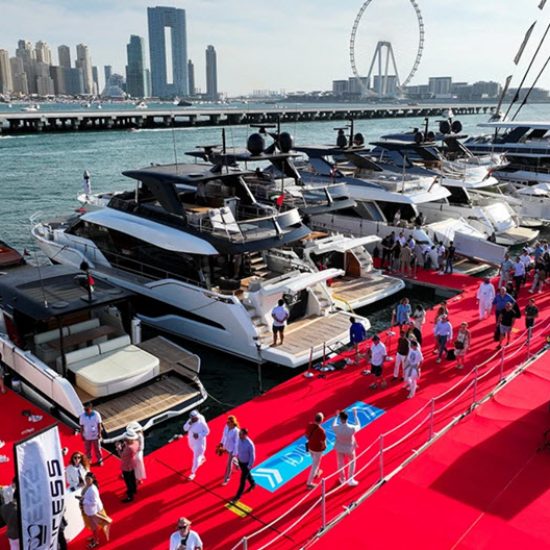Rex Tillerson, the former Exxon chief, didn’t get where he is by being nice to China. When Beijing tried to force his company to abandon a gas exploration project in the waters off Vietnam in 2008, ExxonMobil showed it the finger. BP, Chevron, ConocoPhillips, and several others caved to Chinese pressure. ExxonMobil is still there, drilling on a Vietnamese license in waters also claimed by China.
Is Tillerson about to do the same on behalf of the United States? On Wednesday, the secretary of state-designate seemed ready to give China the finger again. He called on the incoming Trump administration to deny China access to the seven artificial island bases it has built in the southern part of the South China Sea.
In response to a question about whether he would support a more aggressive posture in the South China Sea, he told his Senate confirmation hearing, “We’re going to have to send China a clear signal that, first, the island-building stops and, second, your access to those islands also is not going to be allowed.” The jaws of the Asia policy-watching community hit the floor.
The implications are obvious. The only way the United States could block Chinese access to its existing island bases is by deploying warships and threatening the use of force. Is Tillerson really prepared to risk outright conflict between the two superpowers over the fate of these seven reefs?
Most observers are assuming that he misspoke. The exchange came after about five hours of testimony in front of the Foreign Relations Committee. A minute earlier, Tillerson had said $5 trillion worth of trade passed through the South China Sea each day — he meant $5 trillion a year. We all make mistakes. But what if he meant what he said?
From satellite photographs published by the Asia Maritime Transparency Initiative of the Center for Strategic and International Studies we know that China’s island-building in the Spratly archipelago — disputed in whole or part between China (both of them), Vietnam, the Philippines, Malaysia, and Brunei — has already stopped. The bases are still being finished, but the terraforming is done. However, there’s still a strong suspicion that China’s ultimate intention is to build another massive base on the Scarborough Shoal, to the northeast of the Spratly Islands. The reef was firmly under Philippine control until the United States closed its bases in the country in the early 1990s. Since April 2012, Chinese vessels have been in charge. Sen. John McCain is convinced that China “is intent on seizing and reclaiming the Scarborough Shoal as the third military position in the South China Sea triangle of influence.” Combined with existing Chinese bases in the Spratlys and the Paracels, such a triangle would make Chinese control of the strategic waterway significantly easier.
Reports and rumors from Washington suggest that in early 2016, the United States made clear to China that it was prepared to physically deter any attempts to build on the Shoal. It deployed ships and aircraft to the South China Sea and bases in the Philippines to back up the threat. Tillerson may therefore have been simply stating that he wants this strategy to continue — stopping any island-building on Scarborough Shoal by denying construction vessels access to it.
But perhaps he did mean the United States should deny access to the existing seven artificial islands. James Kraska, professor of international law at the U.S. Naval War College, has testified in front of the House Armed Services Committee that it would be entirely legal to do so. In his reading, the United States “can and should challenge China’s rights to access its artificial islands as a lawful countermeasure in international law to induce China to comply with its obligations of the Law of the Sea Convention and customary international law.” This, Kraska says, was the basis of President Ronald Reagan’s 1983 Oceans Policy.
In other words, Washington could make China’s access to the bases conditional on Beijing’s agreeing to abide by the ruling given by the international Arbitration Tribunal in June 2016. China would, in effect, have to accept that it has no rights to regulate navigation or control fish or mineral resources beyond the areas allowed by the U.N. Convention on the Law of the Sea (UNCLOS). It would have to consent, for example, to the Philippines’ drilling for gas on the Reed Bank, about 60 nautical miles from the massive Chinese base at Mischief Reef; rein in the Chinese fishing fleets causing conflicts near Indonesia’s Natuna Islands; and, above all, give up any attempts to block U.S. naval ships transiting, exercising, or gathering intelligence in the South China Sea.
The blockade strategy would fit with other hints we have heard from the Trump camp about future China strategy. In November, two Trump advisors, Alexander Gray and Peter Navarro, outlined a strategy of “peace through strength” in Foreign Policy. James Woolsey, who then described himself as a senior advisor to Donald Trump, suggested a “grand bargain in which the U.S. accepts China’s political and social structure and commits not to disrupt it in any way in exchange for China’s commitment not to challenge the status quo in Asia.” Logically, respecting the status quo would probably entail a commitment not to occupy any new reefs or deploy new military forces to the existing bases.
For some time, such senior Republicans as McCain and Dan Sullivan have been pressing for the United States to seize the initiative in the South China Sea, rather than merely responding to Chinese actions. It may well be that Tillerson is signaling the arrival of just such a strategy. Rather than waiting for the provocation, we could see an attempt to push back against China’s recent advances and pressure Beijing into accepting that UNCLOS rules apply everywhere in the South China Sea.
China won’t see it that way — unless Washington explains what’s going on extremely carefully — nor will most of the rest of the world. There are many risks to consider. China could call Washington’s bluff and provoke a confrontation. Ships could be sunk, lives lost, and the crisis would spill over into trade and every other area of international policy. A close observer of South China Sea developments, professor Julian Ku of Hofstra University Law School, notes that while it might be legal, the strategy “would start a war.”
Another risk is that the United States might lose the support of its allies, partners, and friends in Southeast Asia and beyond. None want conflict — they need the United States and China to get along so they can develop in peace. Although most seek a robust U.S. presence to counter China’s advances, they don’t want to be forced to choose sides. The United States would risk looking hypocritical: Having long championed the cause of freedom of navigation in the region, it would be deliberately restricting it, albeit in the wider interests of freedom of navigation.
Finally, there’s always the risk that, with naval resources spread thinly around the world and regional governments unwilling to grant access to ports and logistics bases for political reasons, the United States might find it difficult to actually enforce the policy against the full force of the People’s Liberation Army Navy (PLAN). Any failure to go through with the blockade, once declared, would be catastrophic for the reputation of a superpower. The commander of U.S. Naval Forces recently suggested that the PLAN “couldn’t fight their way out of a wet paper bag.” However, other analysts, such as Lyle Goldstein of the China Maritime Studies Institute, have been warning about its growing anti-ship missile capabilities for some time. If both sides of a potential confrontation believe they can win, the likelihood of conflict increases dangerously.
So far the official Chinese response to Tillerson’s comments has been notably mild. The foreign ministry spokesperson made a point of agreeing “with Mr. Tillerson at one point where he recognized disagreements but also intertwined interests and consensus.” Beijing appears to be holding to its “wait and see” position on the Trump administration for the time being. It was left to the nationalistic Global Times to warn, “Unless Washington plans to wage a large-scale war in the South China Sea, any other approaches to prevent Chinese access to the islands will be foolish.”
In 2008, Chinese officials threatened ExxonMobil with painful consequences if it pursued its projects with Vietnam. (I outlined the story in Chapter 5 of my 2014 book.) But the company held a strong hand, not least gas exports from Russia’s Sakhalin region that China was very keen to access. Tillerson held his nerve, called China’s bluff, and won. Will he do it again?
Photo credit: SAUL LOEB/AFP/Getty Images





